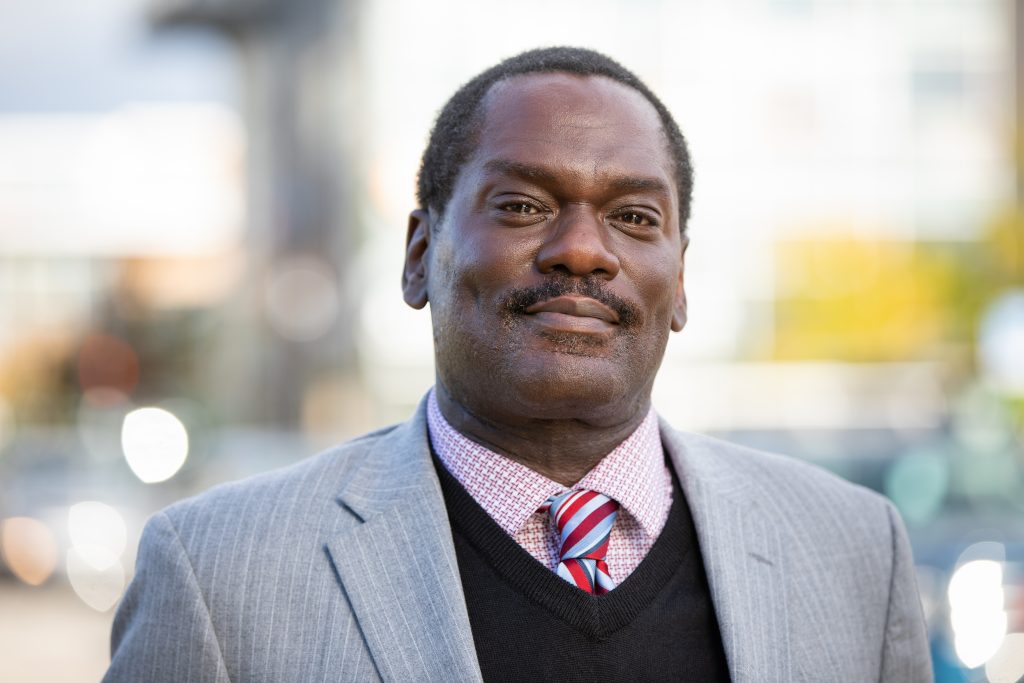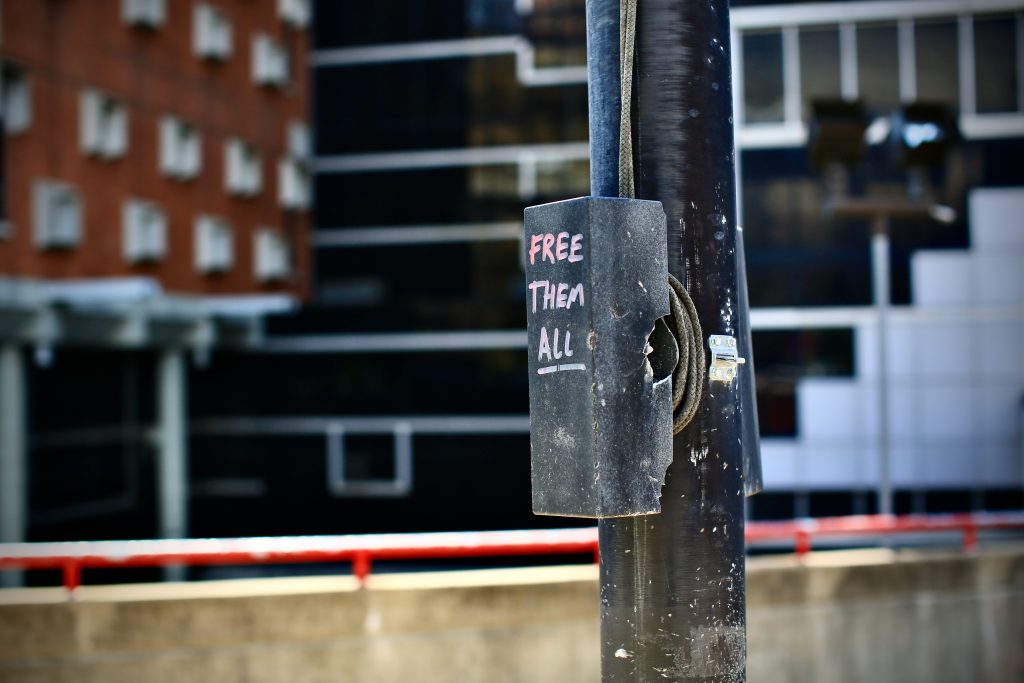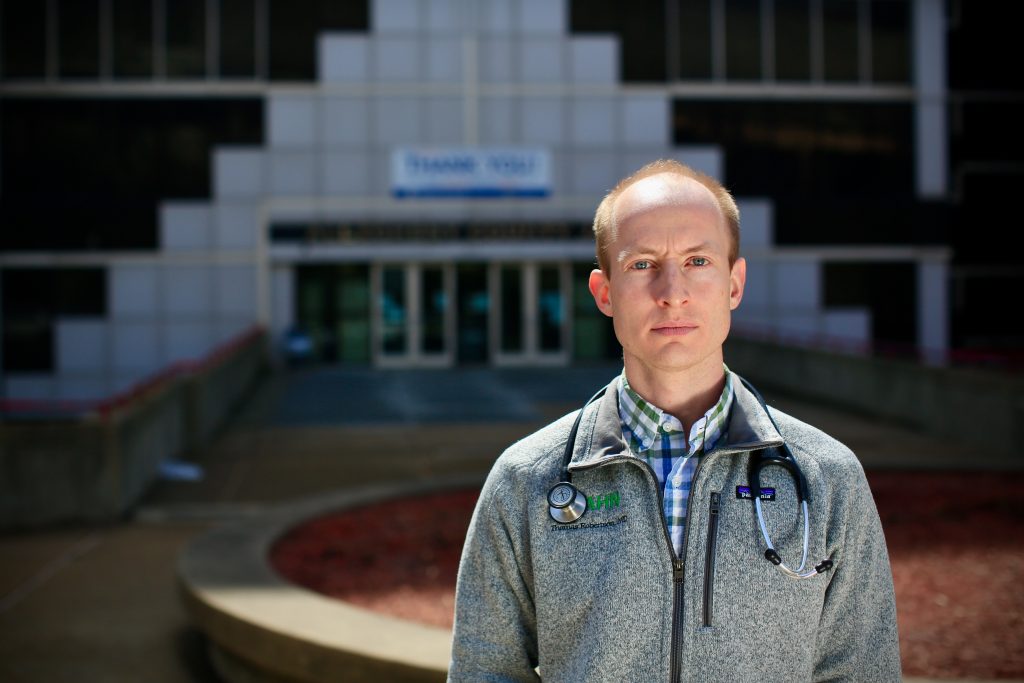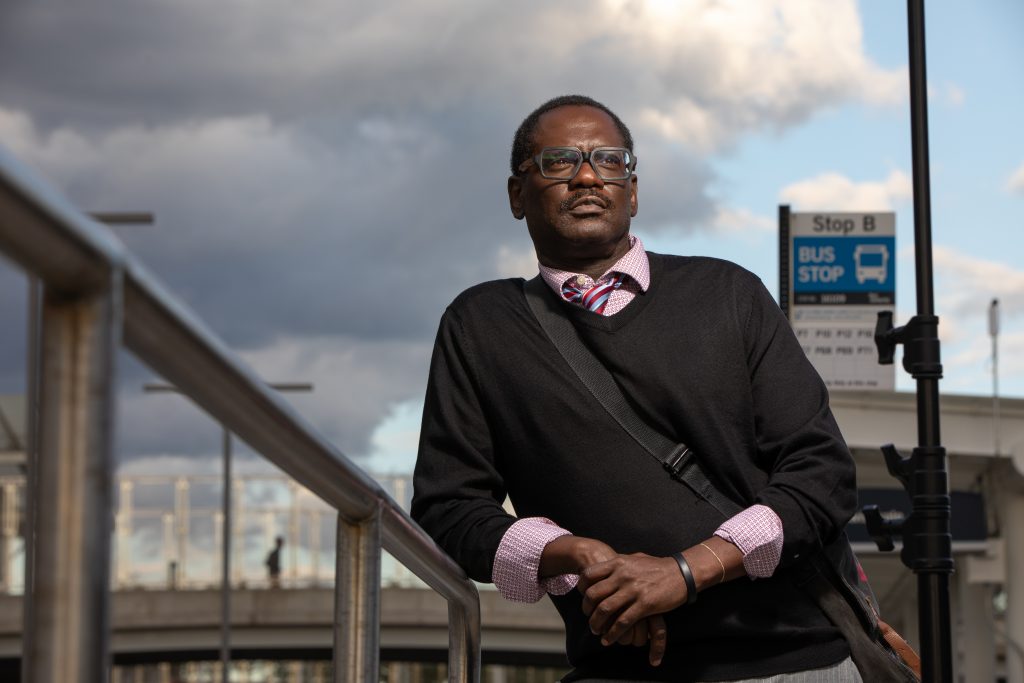The government’s response to the opioid epidemic differs dramatically from its reaction to crack cocaine 30 years ago, except when those impacted are Black or brown.
By Melba Newsome
Every Sunday from noon to 3 p.m., staffers from Prevention Point Pittsburgh (PPP) operate a harm reduction clinic in East Liberty for people who use drugs. PPP swaps old needles for new ones, and gives out sterile injection equipment, safer smoking supplies, wound care and service referrals for those who want it. The most pressing concern, however, stems from the skyrocketing rate of overdose deaths in the city. So, they also hand out Narcan, the opioid overdose reversal medication.
There is a steady stream of takers, and many of them are familiar faces to PPP overdose prevention coordinator Alice Bell. “People come in regularly saying ‘I need more Narcan. I saved four people last week,’” she says. Most of these people have seen someone overdose so they know what it looks like and what to do. If they don’t, Bell will walk them through the process step-by-step.

When PPP began giving out Narcan in 2005, doctors or nurse practitioners wrote out individual prescriptions. Now PPP has a standing order to distribute the drug from five sites around the city. In 2020, PPP gave out close to 9,000 doses of Narcan and documented 190 overdose reversals.
But, according to Bell, overdose prevention resources are not reaching Black people who currently represent an increasing share of opioid-related deaths. The disparity in access makes getting Narcan to Black communities—where there is enormous need but less access to services—a top priority.
The Changing Face of the Epidemic
Nearly one million people have died of a drug overdose since the opioid crisis was first recognized in 1999, making this the deadliest substance abuse crisis in the nation’s history. But the response to this epidemic has been dramatically different from the crack cocaine problem of the 1990s, which sparked the ill-conceived and destructive “War on Drugs.” The mostly Black sufferers were labeled “addicts,” “junkies” and “criminals” who should be locked up for the good of society.
Similar to overdose trends at a national level, Allegheny County is also faced with rising racial disparities in accidental drug overdose deaths.
Otis Pitts, Allegheny County Health Department Deputy Director
Nationally, overdose death rates have increased in every major demographic, but Black overdose death rates eclipsed whites for the first time in 2020. The recent picture in Pittsburgh is even more bleak. Overdose deaths in Allegheny County spiked for every demographic between 2015 and 2018 but Blacks have dominated this statistic in the last three years. The drug death rate went from 40 per 100,000 in 2018 to 93 per 100,000 in 2020, when the combination of fentanyl and a lack of resources during the pandemic drove deaths up 22 percent countywide. Black men are now the most likely to die from overdoses.
“Similar to overdose trends at a national level, Allegheny County is also faced with rising racial disparities in accidental drug overdose deaths,” Allegheny County Health Department deputy director Otis Pitts said in a statement to BlackPittsburgh.com. “These disturbing trends underscore the need for those involved in the opioid crisis response to pursue multiple strategies.”
Pitts recommends strategic Narcan distribution to those most likely to witness an opioid overdose; increased education concerning the presence of the deadly opioid fentanyl in various drug supplies including stimulants, like cocaine; and facilitating connections to medical care, including meaningful access to medication for opioid use disorder and harm reduction services designed to lower the negative consequences of drug use.
Enacting these measures will require a sea change in attitudes and policies. Given the systemic racial inequalities in our social, judicial and medical systems, how exactly do we go about making it happen?
The Tip of the Spear
On December 5, 2021, 51-year-old Brian Broome celebrated nine years of sobriety. Today, he is a former writing instructor at the University of Pittsburgh and author of “Punch Me Up to the Gods,” a coming-of-age memoir and winner of the 2021 Kirkus Prize for Nonfiction. A decade ago, he was the tip of the spear for the changing face of the opioid crisis. He is also among the 70 to 80 percent of people whose opioid abuse did not begin with a legitimate prescription.

Brown and Black people are expected to bear the burden of everything that happens to a lot of white people.
Brian Broome
Broome began abusing drugs more than 30 years ago to cope with the daily anxiety of being dark-skinned and gay in Ohio and later, Pittsburgh. As is not uncommon among many Black people, Broome viewed his depression and anxiety as a regular part of what it means to be Black in America.
“I was actively addicted to alcohol and cocaine,” he says. “Never at any point did I think I was self-medicating. I just thought this is what you do to get through the day. Then I had a friend who was like, ‘Try this [opioid.]’ And when I did, all my problems melted away. I couldn’t have been anxious if I’d tried. I knew this was going to be a constant in my life.”
Two years later, Broome was broke, on the verge of eviction and his friends had given him an ultimatum: get help or else. He agreed just to shut them up and checked into Greenbriar Treatment Center, a 62-bed adult inpatient co-ed facility in Washington County. “I looked at rehab as an opportunity to get out of work for a few days,” he says. “I went to my intake session drunk but when I began drying out, I realized that I needed to be there. I thought, ‘Oh my god! There are millions and millions of people who don’t drink first thing in the morning.’”
Broome’s 2012 decision to get clean could not have come at a better time. By 2013, fentanyl was being added to virtually every drug on the street, causing overdose deaths to double every year for the next three years, with a steep increase among Black people.
Despite being only one of two Black people at Greenbriar, Broome knew he was in the right place. He felt camaraderie with white majority in the facility with similar struggles and who had done similar things to feed their addiction. But it slowly dawned on him that, even among substance abusers, a racial hierarchy existed. There was a broad assumption among white drug users that they were different. They were victims; Black people like him were addicts.
Years later, while waiting for a rehab meeting to start, Broome heard a white woman talk about her daughter’s opioid addiction. “She was saying how her daughter wouldn’t be in this position if it wasn’t for the Mexicans who got her hooked because they were bringing drugs into the country and the Black people were selling it to her,” recalls Broome. “As far as she was concerned, her daughter bore no responsibility. Brown and Black people are expected to bear the burden of everything that happens to a lot of white people. I’m like, ‘Did they take the needle and plunge it into your daughter’s arm?’”
Different Policies for a Different Population
The attitudes Broome describes are prevalent and reflected in historical and current U.S. drug policy. When nonmedical opioid use increased in white communities, regulators looked for ways to spare them the drug related indignities routinely heaped on people of color.
“The policy responses seen as appropriate for Black and brown addicts — methadone and prison — were not seen as a viable option for white addicts. New alternatives were needed,” writes Helena Hansen and Julie Netherland in the 2017 study, “White Opioids: Pharmaceutical Race and the War on Drugs That Wasn’t.”
To address those needs, Congress rushed to pass the Drug Addiction Treatment Act of 2000 (“DATA 2000”), which included a provision that allows physicians to treat opioid addiction with buprenorphine (Suboxone), a narcotic medication that could be prescribed in an office setting.
I don’t believe that, at any point in history, there’s ever been a monument built for addicts. The idea of building a monument to crack addicts would be laughable.
Brian Broome
Meanwhile, they refused to modify the outdated, punitive rules around methadone. Instead, the recovery drug used by most African Americans remained under the auspices of the Drug Enforcement Agency, along with the accompanying stigma. Methadone patients must make daily visits to a clinic where they can be observed taking the medication, requirements that make it harder to maintain employment or resume a regular routine.
As late as 2018, the lion’s share of funding for the opioid epidemic went to research, treatment and prevention rather than police and prisons; the opposite was true when crack cocaine was ravaging Black communities. In April of that year, the Trump White House hosted the “Prescribed to Death” memorial — an art exhibit that features a wall of 22,000 pills symbolizing the 22,000 deaths from prescription overdoses the previous year. The monument perpetuated the myth that prescription painkillers are responsible for most overdose deaths, when roughly three-fourths are caused by fentanyl or another synthetic opioid street drug.

“I don’t believe that, at any point in history, there’s ever been a monument built for addicts,” Broome said. “The idea of building a monument to crack addicts would be laughable. This feels like an effort to cast these particular addicts as heroes and victims and designed to remove the stigma of addiction and humanize these mostly white victims. It shows how we want to believe the worst in Black people and the best in white people.”
Disparities in Access to Treatment and Harm Reduction Measures
Experts almost universally acknowledge that substance use disorder (SUD) is a crisis irrespective of race and/or ethnicity. However, limited access to medical resources, combined with inadequate community infrastructure and insufficient insurance coverage, factor in the sharp rise in Black opioid overdose deaths.
Just 10 percent of Black people with SUD receive treatment, according to federal government data. Even after suffering a non-fatal overdose, only 1 in 6 survivors receive follow-up treatment like medication and rehabilitation services; Black patients are half as likely to access treatment as non-Hispanic white patients.
Drug policy researchers and addiction medicine experts say Black and other Americans of color lack the same access to treatment and harm reduction services as whites. “We have developed an approach to opioid use treatment and services that has benefited white people disproportionately,” explains Marc LaRochelle, MD, an addiction medicine specialist at Boston Medical Center. “In the last three years, it looks like the brakes have been put on for white population, but the other groups are still going up.”
A variety of studies have found that medication assisted treatment (MAT) with methadone or buprenorphine can cut the all-cause mortality rate among addiction patients by half or more, but 91 percent of buprenorphine patients are whites with private insurance. Although the drug is covered by Medicaid, fewer doctors accept it because of low reimbursement rates.
The Pittsburgh health department gives Narcan to people leaving jail and first responders leave it behind when they respond to an overdose. Probation and parole officers carry it around, which Bell says is self-serving and ineffective since the likelihood of encountering somebody who is overdosing is very low. “They feel that handing it out is giving people permission to use drugs,” she says. “People aren’t waiting for their permission.”
In an Alsace Way alley in the Homewood neighborhood, one is equally likely to find dealers and users, as well as Narcan in nearby trees or bushes left behind by someone who picked it up from PPP just in case there is an overdose. In the parking lot across the street, PPP hands out prescriptions for buprenorphine, clean needles and other harm reduction supplies.

I was actively addicted to alcohol and cocaine, never at any point did I think I was self-medicating. I just thought this is what you do to get through the day.
Brian Broome
Pennsylvania Governor Tom Wolf issued an opioid disaster declaration in January 2018 and has renewed it 15 times since then. But the state seems to be at war with itself over the best way to get arms around the crisis. One state senator has twice introduced a bill that would make buprenorphine harder to prescribe and then only to patients who also receive counseling.
Aside from Pittsburgh and Philadelphia, giving out sterile syringes for drug use is a felony offense in Pennsylvania. As a state representative, newly elected Pittsburgh Mayor Ed Gainey co-sponsored a bill to make syringe service programs legal throughout the state. He recently toured the Homewood PPP location, accompanied by two Democratic state representatives, Sara Innamorato and Emily Kinkead. All three support expanding harm reduction measures statewide and Gainey also voiced his support for a supervised injection site.
Opponents to such measures argue that such sites just enable users but Innamorato says that misses the point. “Dead people can’t recover; we need policies that keep people from dying while we work toward long-term solutions to the overdose crisis,” she said when introducing a harm reduction bill in the state legislature last month.
Disproportionate Policing and Law Enforcement
Nationally, there has always been a stark racial gap in drug enforcement and sentencing. Even the 100-to-1 powder cocaine-to-crack sentencing disparity in the Anti-Drug Abuse Act of 1986 was selectively enforced by race. Black crack users received twice as much time as white crack users.
In the fall of 2014, when this was still considered a white problem, Pennsylvania enacted the Good Samaritan Law that grants immunity from prosecution to victims of suspected overdoses and the people who call 911 on their behalf. But Bell says the law has never been as widely used as intended.
“People who use drugs don’t trust the police,” she says. “Even if they don’t get arrested, they get harassed and mistreated in all kinds of ways and the consequences can be a lot more serious if you’re Black. One of the most detrimental things for people who use drugs is an interaction with law enforcement.”
The state’s Good Samaritan Law has also been undermined by the “drug delivery resulting in death” (DDRD) statute. Enacted a decade ago amid rising drug casualties, the law calls for decades-long sentences for anyone who sells or transfers drugs to a person who later dies.
In a training session for Pennsylvania defense lawyers, Northeastern law professor Leo Beletsky said threats of a long prison sentence are enough to stop drug users from calling for help if a friend overdoses. He also said that white defendants charged with DDRD receive significantly lower sentences than people of color.
A GIS story map based on criminal and public health data and Allegheny coroner records showed that Black drug arrests in Pittsburgh far exceeded all other racial groups, a pattern not supported by increased overdose numbers or higher drug use. In 2019, police primarily focused on the majority Black neighborhoods of Homewood and Northside. As a result, Pittsburgh’s 23 percent Black population accounted for 59 percent of its drug arrests. This equates to 1 in 73 Black residents arrested compared to 1 in 338 of white residents.
“For all the rhetoric that we’ve had for years that we can’t arrest our way out of the problem, we’re still damn well trying,” says Bell. “While there’s not any evidence of a disparity in the demographics of people who use illegal drugs, there is a big disparity in who gets arrested.”

The RIvER (Rethinking Incarceration and Empowering Recovery) Clinic opened last June to care for people immediately after they leave jail and, in the process, addresses the causes of repeated recidivism: addiction and mental health.
They particularly hope to prevent more overdoses, the risk of which is significantly higher for someone leaving jail. The disparity of who gets arrested adds to the disparity in overdose rates. According to RIvER co-founder Thomas Robertson, the risk of overdose is 100 times higher, and the risk of death is 12 times greater once someone is released from jail or prison.
“Most people probably are not using drugs in jail, so their tolerance goes down,” he explains. “The other thing is how long they’re incarcerated. The potency of the product on the streets has changed. Most of it is fentanyl or fentanyl derivatives. These are super potent products and they may not even realize that.”
For someone who got clean for the first time in his 40s, Broome knows he’s incredibly fortunate to have avoided the criminal justice system. “I have not had any run-ins and that’s just sheer luck,” he says. “Many of my friends who have can’t get back on track because they have felonies.”

Broome’s insight, like the impactful work of organizations like The RIvER, makes clear is that it is going to take luck and more to end the opioid crisis increasingly impacting too many Black lives in Pittsburgh and beyond.


